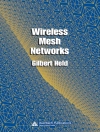Soft Computing is a complex of methodologies that includes artificial neural networks, genetic algorithms, fuzzy logic, Bayesian networks, and their hybrids. It admits approximate reasoning, imprecision, uncertainty and partial truth in order to mimic the remarkable human capability of making decisions in real-life, ambiguous environments. Soft Computing has therefore become popular in developing systems that encapsulate human expertise. ’Applications of Soft Computing: Updating the State of Art’ contains a collection of papers that were presented at the 12th On-line World Conference on Soft Computing in Industrial Applications, held in October 2007. This carefully edited book provides a comprehensive overview of the recent advances in the industrial applications of soft computing and covers a wide range of application areas, including design, intelligent control, optimization, signal processing, pattern recognition, computer graphics, production, as well as civil engineering and applications to traffic and transportation systems. The book is aimed at researchers and practitioners who are engaged in developing and applying intelligent systems principles to solving real-world problems. It is also suitable as wider reading for science and engineering postgraduate students.
Innehållsförteckning
Design of Soft Computing Techniques.- Linguistic Information in Dynamical Fuzzy Systems — An Overview.- PSO-Optimized Negative Selection Algorithm for Anomaly Detection.- Adaptation of Learning Parameters for Choquet Integral Agent Network by Using Genetic Algorithms.- Comparison of Effective Assessment Functions for Optimized Sensor System Design.- Visualization and Complexity Reduction of Neural Networks.- Modelling, Control and Optimization.- Artificial Immune Network Combined with Normative Knowledge for Power Economic Dispatch of Thermal Units.- Scheduling of Tasks in Multiprocessor System Using Hybrid Genetic Algorithms.- A Novel Modelling and Optimisation Technique for Business Processes: An Evolutionary Computing Based Approach.- Use of Multi-objective Evolutionary Algorithms in Extrusion Scale-Up.- Signal Processing and Pattern Recognition.- A Multi-Agent Classifier System Based on the Trust-Negotiation-Communication Model.- Error Compensation Based Directional Interpolation Algorithm for Video Error Concealment.- An Evolutionary Approach to Digitalized Hand Signs Recognition.- Civil Engineering.- Prediction of Ultimate Capacity of Laterally Loaded Piles in Clay: A Relevance Vector Machine Approach.- Air Quality Forecaster: Moving Window Based Neuro Models.- Computer Graphics, Imaging and Vision.- Automatic 3D Modeling of Skulls by Scatter Search and Heuristic Features.- Multi-modal Registration Using a Combined Similarity Measure.- An Investigation into Neural Networks for the Detection of Exudates in Retinal Images.- An Optimisation Approach to Palette Reordering for Indexed Image Compression.- Production, Manufacturing, and Design.- Weighted Tardiness Scheduling with Sequence-Dependent Setups: A Benchmark Problem for Soft Computing.- An Exploration of Genetic Process Mining.- Traffic and Transportation Systems.- An Adaptive Differential Evolution Algorithm Applied to Highway Network Capacity Optimization.- Incorporating Fuzzy Reference Points into Applications of Travel Choice Modeling.- The Role of the Uncertainty in ATIS Applications.- Human-Like Adaptive Cruise Control Systems through a Learning Machine Approach.- Fuzzy Evaluation of Contra-Flow Evacuation Plans in Texas Medical Center.- Arrow Exit Sign Placement on Highway Using Fuzzy Table Look-Up Scheme.












